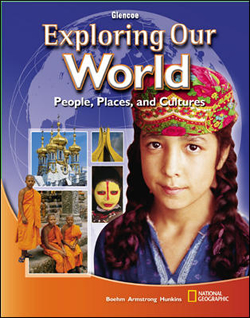
Exploring Our World: People, Places, and CulturesChapter 4: Physical Geography of the United States and CanadaChapter OverviewsThe United States and Canada cover most of the land area of North America and share many of the same physical features, resources, and climates. Canada's vast size makes it the second-largest country in the world after Russia; the United States is third-largest. The countries share the Great Lakes—the world's largest group of freshwater lakes—and cooperated to build the St. Lawrence Seaway to link these lakes to the Atlantic Ocean. The project benefited both countries' trade and transportation of goods. Projects like these link the economies of the United States and Canada. Both are strong industrialized economies. Both also have major energy resources such as oil and natural gas reserves. Because the United States uses more of these resources than it produces, however, it buys some of these resources from Canada. Both countries have other natural resources such as rich soil, timber, and fish. The countries work together to address environmental issues caused by economic growth. The entire region rises in elevation from east to west. Most people live in the moderate middle latitude climates of each country, although the region as a whole has a great variety of climate zones. Few people live in the frozen tundra of Alaska and northern Canada, while the tropical climates of southern Florida and Hawaii attract tourists throughout the year. Natural hazards affect the region: hurricanes bring heavy winds to the Atlantic and Gulf coasts, while earthquakes are threats to the West and blizzards hit parts of both countries. |  |















